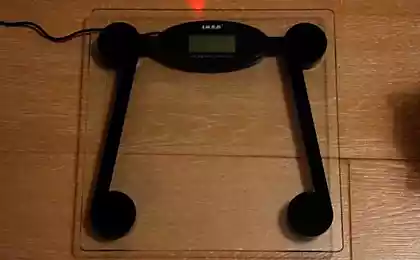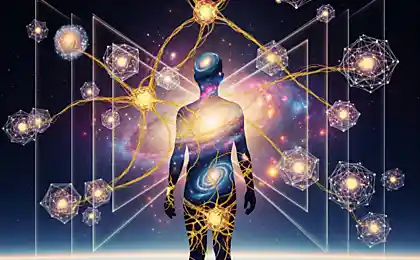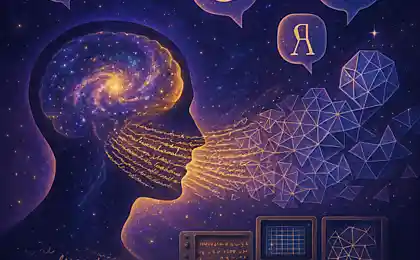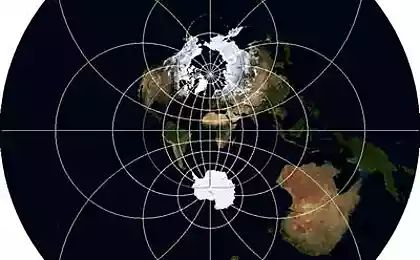449
Psychogenic rheumatism: the 3 clinical variants of the disease
Clinically the disease is manifested non-permanent polyarthralgia and myalgia, which may have different localization, severity, duration, and dependence on precipitating factors.
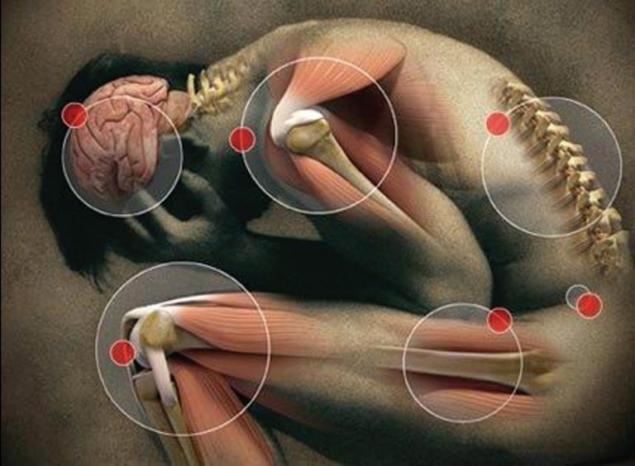
The pain is characterized by variability, combined with the unusual sensations (paresthesia, feeling of heaviness, heat). Classic symptoms of arthritis, osteoarthritis or crystalline arthropathy is not detected, and no characteristic local changes of the joints, laboratory signs do not confirm active inflammation (in most cases).
The main tool of diagnosis psychogenic "rheumatism" to be the ability to determine the psychopathological condition, a symptom of which are the "rheumatic" pains.
Numerous testimonies of various authors suggest that the basis for the development of such disorders can be of various mental disorders. This depression (most often in its involutional form), and the expression of hypochondriacal onset schizophrenia, and neurosis. Arthralgia can perform adaptive functions, contributing to "the device via a disease."
Can you explain the mechanism of this pathology?
Knowing the nature of psychogenic dystonia and disharmonise, there is no doubt that violations of microcirculation in solenovo system (bone, synovial environment of the joint, muscle) are sufficient grounds for the formation of pain. The combination of psychogenic disorders of the distal circulation with asthenic sensitivity or depressive rating of perception contributes to the formation of vivid figurative paintings of the painful condition. Related anxiety, depression, or blocked aggression muscle tension or hypokinesia create additional local conditions for the development of psychogenic of "rheumatism".
There are three clinical variants of the disease (rather syndrome):
1. Actually psychogenic rheumatism in which the thorough examination does not reveal any signs of organic pathology of locomotor apparatus. Of course, this syndrome is not homogeneous, since its base various psychopathological (anxiety, depression, asthenia, hypochondria, aggression), and local conditions (load on the joints, the degree of muscle tension) other in each case.
But at the same time combines this state of total dependence on primary mental activation and therapeutic effectiveness psychoeconomic influences.
2. Psychogenic rheumatism, complementing the clinical manifestations of organic diseases of the locomotor system.A painful condition caused by the development of pathological personality reaction to rheumatic disease or with a "parallel" course of psychopathology and organic disease of the joints. The situation under this option, pathology is very diverse.
Causes diagnostic doubt the development of the syndrome on the basis of the minor organic changes (osteophytes without obvious vertebral discopathy, "reacTIVision" arthritis, nodules, Heberden, miofibroz). Obviously exaggerated subjective manifestation of such a small organic pathology suggests the development of psychopathological States.
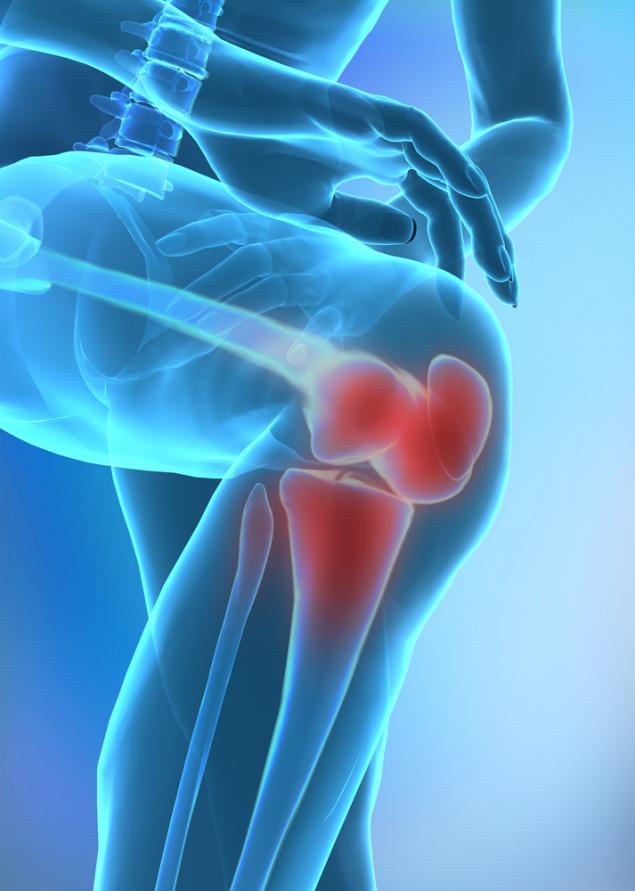
Undoubted organic disease (any of a group of rheumatic pathology) often displaces the overall structure of the subjective image of the disease those of its components, which are due to personality. However, it is necessary for any, even extremely difficult at times, organic diseases, to analyze the psychological components of the disease, in order to "cut off" those symptoms that can afflict suffering of the patient.
Problems encountered in the treatment of severe somatic patient, associated with the selection of optimal drug therapy, and the need for physical therapy and proper diet, especially for gout, arthropathy associated hyperlipidemia, diabetes mellitus and other metabolic disorders.
On this ground may arise due to personal conflicts: the seeming intolerance of drugs, unreasonable fears loads, the rejection of physical therapy due to pain movements, unwillingness to resign ourselves to a limited range of "tasteless" food.
Shield the patient from the imposed unfavorable treatment regimens and are subjective symptoms (mainly pain) used them as proof of the ineffectiveness or even "harm" recommended treatment strategies.
Prolonged recovery, and difficulties in systematic rehabilitation, requiring the rheumatic diseases binding activity of the patient (including high physical activity) — all the problematics secondary "psychogenic" adding to the underlying disease.
3. Residual "rheumatism" is defined as a kind of fixing attention on the patient's history of muscle-joint problems or injuries. Such "memories" provoke similar past feeling, giving the impression of recurrence, which is especially dangerous in cases when therapeutic intervention is needed to overcome another "exacerbation" may, in the opinion of the patient, can cause serious consequences.
Such situations occur in rheumatism, and when the current benign systemic diseases of connective tissue, when the fear settles in the hearts of patients as a natural consequence of awareness of the prognosis of the disease.
Residual diagnosis of psychogenic syndrome is based on the combination of the lack of paraclinical signs of deterioration with the undoubted presence of the syndrome of mental disorders.
In modern medical literature of patients with psychogenic "rheumatism", can be viewed as cases of fibromyalgia. According to the definition in "Manual medicine" ("The Merck Manual", vol. 1, 1992), is "... a group of commonly occurring extra-articular rheumatic diseases, manifested by persistent pain, tenderness and stiffness in the muscles, in the places of attachment of tendons to the bones and related soft tissue structures."
Examines the syndrome of primary fibromyalgia, which certain frequencies have been observed in young women that are characterized by: tension, anxiety, persistence, susceptibility to stress and depression, but also in adolescents (more often girls), and adult persons of more advanced age, often in combination with osteoarthritis of the spine. Considered to be the same-Genesis of irritable bowel syndrome. In secondary fibromyalgia is defined by primary organic disease of the supporting tissue. published
P. S. And remember, only by changing their consumption — together we change the world! ©
Source: vk.com/wall-23903469?w=wall-23903469_5707

The pain is characterized by variability, combined with the unusual sensations (paresthesia, feeling of heaviness, heat). Classic symptoms of arthritis, osteoarthritis or crystalline arthropathy is not detected, and no characteristic local changes of the joints, laboratory signs do not confirm active inflammation (in most cases).
The main tool of diagnosis psychogenic "rheumatism" to be the ability to determine the psychopathological condition, a symptom of which are the "rheumatic" pains.
Numerous testimonies of various authors suggest that the basis for the development of such disorders can be of various mental disorders. This depression (most often in its involutional form), and the expression of hypochondriacal onset schizophrenia, and neurosis. Arthralgia can perform adaptive functions, contributing to "the device via a disease."
Can you explain the mechanism of this pathology?
Knowing the nature of psychogenic dystonia and disharmonise, there is no doubt that violations of microcirculation in solenovo system (bone, synovial environment of the joint, muscle) are sufficient grounds for the formation of pain. The combination of psychogenic disorders of the distal circulation with asthenic sensitivity or depressive rating of perception contributes to the formation of vivid figurative paintings of the painful condition. Related anxiety, depression, or blocked aggression muscle tension or hypokinesia create additional local conditions for the development of psychogenic of "rheumatism".
There are three clinical variants of the disease (rather syndrome):
1. Actually psychogenic rheumatism in which the thorough examination does not reveal any signs of organic pathology of locomotor apparatus. Of course, this syndrome is not homogeneous, since its base various psychopathological (anxiety, depression, asthenia, hypochondria, aggression), and local conditions (load on the joints, the degree of muscle tension) other in each case.
But at the same time combines this state of total dependence on primary mental activation and therapeutic effectiveness psychoeconomic influences.
2. Psychogenic rheumatism, complementing the clinical manifestations of organic diseases of the locomotor system.A painful condition caused by the development of pathological personality reaction to rheumatic disease or with a "parallel" course of psychopathology and organic disease of the joints. The situation under this option, pathology is very diverse.
Causes diagnostic doubt the development of the syndrome on the basis of the minor organic changes (osteophytes without obvious vertebral discopathy, "reacTIVision" arthritis, nodules, Heberden, miofibroz). Obviously exaggerated subjective manifestation of such a small organic pathology suggests the development of psychopathological States.

Undoubted organic disease (any of a group of rheumatic pathology) often displaces the overall structure of the subjective image of the disease those of its components, which are due to personality. However, it is necessary for any, even extremely difficult at times, organic diseases, to analyze the psychological components of the disease, in order to "cut off" those symptoms that can afflict suffering of the patient.
Problems encountered in the treatment of severe somatic patient, associated with the selection of optimal drug therapy, and the need for physical therapy and proper diet, especially for gout, arthropathy associated hyperlipidemia, diabetes mellitus and other metabolic disorders.
On this ground may arise due to personal conflicts: the seeming intolerance of drugs, unreasonable fears loads, the rejection of physical therapy due to pain movements, unwillingness to resign ourselves to a limited range of "tasteless" food.
Shield the patient from the imposed unfavorable treatment regimens and are subjective symptoms (mainly pain) used them as proof of the ineffectiveness or even "harm" recommended treatment strategies.
Prolonged recovery, and difficulties in systematic rehabilitation, requiring the rheumatic diseases binding activity of the patient (including high physical activity) — all the problematics secondary "psychogenic" adding to the underlying disease.
3. Residual "rheumatism" is defined as a kind of fixing attention on the patient's history of muscle-joint problems or injuries. Such "memories" provoke similar past feeling, giving the impression of recurrence, which is especially dangerous in cases when therapeutic intervention is needed to overcome another "exacerbation" may, in the opinion of the patient, can cause serious consequences.
Such situations occur in rheumatism, and when the current benign systemic diseases of connective tissue, when the fear settles in the hearts of patients as a natural consequence of awareness of the prognosis of the disease.
Residual diagnosis of psychogenic syndrome is based on the combination of the lack of paraclinical signs of deterioration with the undoubted presence of the syndrome of mental disorders.
In modern medical literature of patients with psychogenic "rheumatism", can be viewed as cases of fibromyalgia. According to the definition in "Manual medicine" ("The Merck Manual", vol. 1, 1992), is "... a group of commonly occurring extra-articular rheumatic diseases, manifested by persistent pain, tenderness and stiffness in the muscles, in the places of attachment of tendons to the bones and related soft tissue structures."
Examines the syndrome of primary fibromyalgia, which certain frequencies have been observed in young women that are characterized by: tension, anxiety, persistence, susceptibility to stress and depression, but also in adolescents (more often girls), and adult persons of more advanced age, often in combination with osteoarthritis of the spine. Considered to be the same-Genesis of irritable bowel syndrome. In secondary fibromyalgia is defined by primary organic disease of the supporting tissue. published
P. S. And remember, only by changing their consumption — together we change the world! ©
Source: vk.com/wall-23903469?w=wall-23903469_5707






